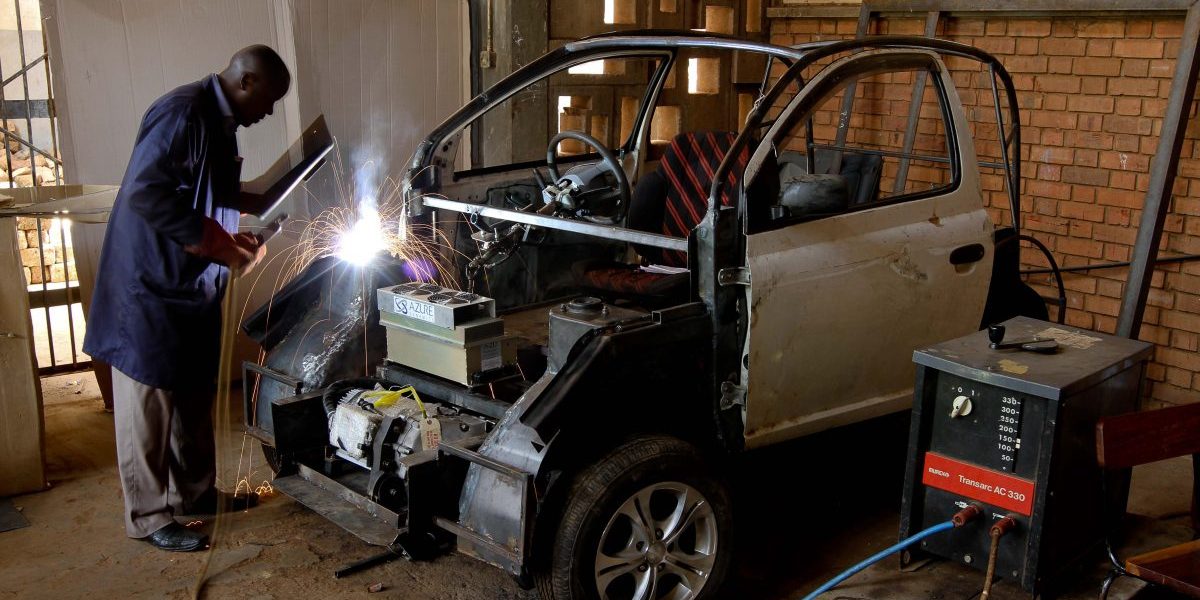The pandemic has highlighted a number of systemic problems in the Southern Africa Development Community (SADC) region, the major one being the high rate of unemployment and poverty. Even prior to the pandemic, the region’s unemployment rate was hovering around 11%, with a youth unemployment rate of about 25%. Unemployment directly affects the levels of poverty in the region. Instead of lamenting how our lives have changed since the advent of COVID-19, we should use the pandemic to look at new ways of doing things, such as fast-tracking initiatives to improve the livelihoods of everyone in SADC.
An opportunity staring us in the face is the electrification of transport; in other words the transition from petrol and diesel vehicles to electric vehicles. A report titled Jobs in green and healthy transport states that the Electric Vehicle (EV) industry is set to create at least 10-million jobs worldwide. What can SADC governments do to make sure that the region gets a share of those job opportunities?
One of the most popular types of electric vehicles is the Battery Electric Vehicle (BEV). BEVs are powered by a rechargeable lithium-ion battery. You recharge them in a similar way to recharging your mobile phone. The raw materials required to produce lithium-ion batteries are found in several SADC countries. These raw materials include manganese, lithium, nickel, graphite and cobalt. Glencore and Gécamines SA in the Democratic Republic of Congo mine cobalt, South32 in South Africa mines manganese, Bikita Minerals in Zimbabwe mines lithium, Bindura Nickel Corporation mines nickel in Zimbabwe and the Syrah Resources Balama Graphite Mine operation in Mozambique mines graphite.
Some may see this as encouraging, but SADC has been exporting raw materials for centuries and millions of its citizens are still living below the poverty line, unable to benefit from this. The revenue gained from exporting raw materials is minimal compared with the revenue generated from exporting the value-added products gained from these materials.
For example, if SADC processed the raw material used to make lithium-ion batteries into battery-grade material, it could charge higher prices, gaining additional export revenue. If this battery-grade material was used to produce the components for lithium-ion cells, an even higher price could be commanded.
Now imagine if the entire battery manufacturing value chain — from mining raw materials, manufacturing battery cell components, to cell and battery pack manufacture and assembly — took place in the SADC? The potential export revenue from this value chain would more than double, and job opportunities would be created at all stages along the line.
A great deal of training and skills development is required to capitalise on these job opportunities. Competency in Stem (science, technology, engineering and mathematics) subjects is essential. Parents, teachers and guardians need to encourage their children to take physical science and pure mathematics up to grade 12. Without stronger Stem skills, the SADC will not be able to establish a competitive advantage in lithium-ion battery manufacturing.
SADC needs qualified scientists and chemists; chemical, electrical, materials and industrial engineers; as well as technicians and software developers to take advantage of these opportunities. Retraining and upskilling people so that they are familiar with new battery technologies will also be required. At the same time, entrepreneurial skills will need to be developed to enable small and medium enterprises or start-ups to participate in lithium-ion battery manufacturing.
So what needs to be done to make sure that SADC receives a share of the job opportunities presented by the electrification of transport? There needs to be political will from all SADC governments to implement policies that encourage the uptake of EVs in the region. Countries in other parts of the world with a high uptake of EVs have been stimulated by policy, which created incentives for EV adoption. Due to the low adoption of EVs in SADC, businesses have had no incentive to invest in the skills, equipment and infrastructure required to manufacture lithium-ion batteries for EVs. Other factors leading to the slow adoption of EVs in the region — lack of consumer awareness, lack of infrastructure (such as EV charging stations) and price — will become less disabling once government incentives are put in place.
Already petrol and diesel vehicles are actively being phased out in EU countries, with some hoping to phase out all petrol and diesel vehicles by 2025, while Asia is a prominent player in lithium-ion battery manufacturing. SADC governments should give their citizens an opportunity to access a share of those 10-million jobs that could be created. Let us not be left behind because we took too long to implement policies to enable a transition from petrol- and diesel-powered vehicles to electric ones.
This op-ed is based on a longer report, SADC e-Mobility Outlook: Accelerating the Battery Manufacturing Value Chain








